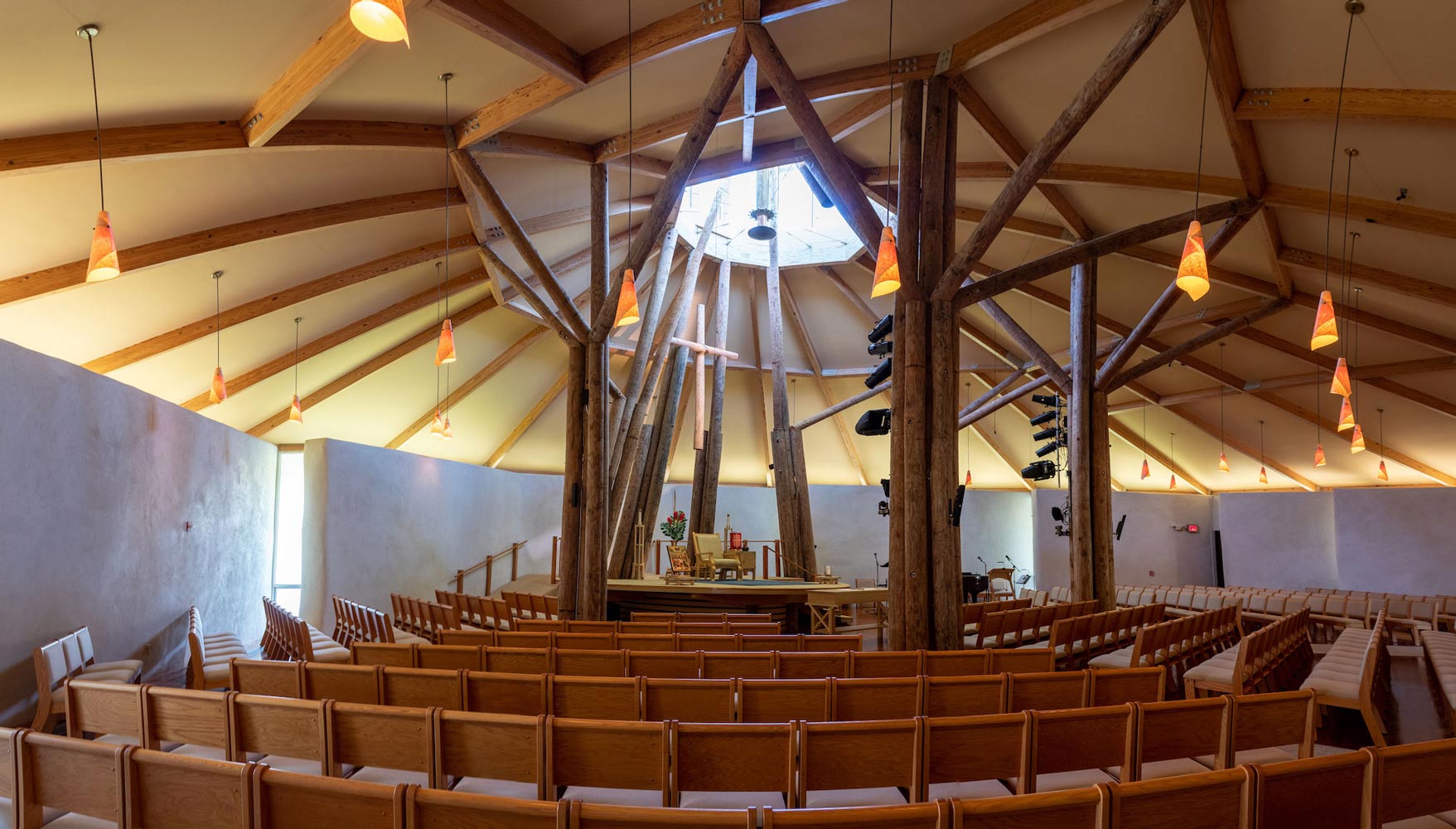Sacred spaces represent the highest values of society; their purpose is to instill visitors with a sense of wonder and awe, balanced with contemplation and introspection. Sacred architecture is one of the oldest forms of building, rooted in the natural world and emerging across cultures worldwide: Egyptian pyramids, Mesopotamian ziggurats, Neolithic henges, Buddhist stupas, Hindu temples, Islamic mosques, Jewish synagogues, and Christian churches. Designs are often based on specific theological or spiritual principles that have been codified in religious texts (such as the Hindu Vastu Shastra) that reflect a belief in God as the “divine architect.”
Throughout history, sacred spaces have both embodied and inspired architectural, engineering, and artistic innovation. Early Christian churches borrowed the form of Roman basilicas (public halls suited for large gatherings) before adapting into the common Latin- and Greek-cross plans seen today. The Pantheon in Rome—still the largest non-reinforced concrete dome in the world—inspired architects of the Renaissance to reach new heights. As the physical embodiment of a community’s spiritual aspirations, religious buildings have traditionally featured rich materials and incorporated works by leading artists and artisans.
In Austin, sacred spaces provide a useful guide to a variety of architectural styles, from Gothic Revival to Neoclassical to Mid-Century Modern and beyond. Moreover, the history of Austin’s churches—their growth and decline, relocation and restoration—follows the trajectory of the city as a whole. The skyline of early Austin was dominated by its churches, which served as centers of political and cultural life. As populations moved away from downtown, places of worship followed. In today’s increasingly nonreligious world, these institutions remain committed to community-building, inclusivity, and service.
Narratives for this tour were written by Guide to Austin Architecture Committee members Gabriella Bermea, AIA; Bud Franck, AIA; Darwin Harrison, AIA; Jason John Paul Haskins, AIA; James Mustillo, AIA; and Abigail Thomas. Additional editorial and coordination were provided by Bud Franck, Darwin Harrison, and Courtney Mallen, Assoc. AIA. Photography was provided by Bud Franck, Jason John Paul Haskins, and James Mustillo, with additional images contributed by Paul Finkel, Leonid Furmansky, Paul Hester, Andrew Pogue, Whit Preston, Paul Rocheleau, and Austin History Center.

